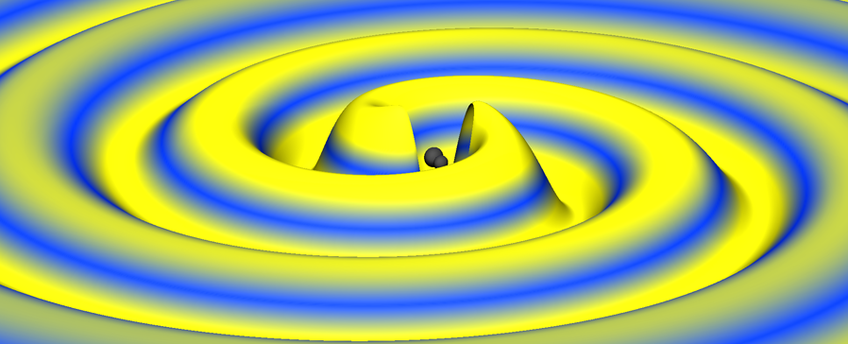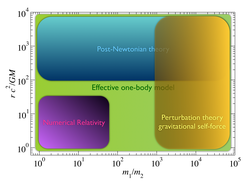
Astrophysical and Cosmological Relativity
The department develops accurate analytical and numerical models of gravitational-wave sources, and uses them to analyse data, improving our ability to extract unique astrophysical and cosmological information from the observed signals, and testing Einstein’s theory of general relativity.
On September 14, 2015, LIGO (Laser Interferometer Gravitational-Wave Observatory) detected for the first time gravitational waves emitted by two colliding black holes and inaugurated the era of gravitational wave astronomy. Since then, several binary black-hole coalescences have been observed, and in August 2017 a gravitational wave from a binary neutron star inspiral has been detected. In August 2017, the European gravitational-wave observatory Virgo joined the detectors network, observing gravitational waves and improving the sky localization. Researchers of the department develop highly accurate models of gravitational waves that black holes generate in the final process of orbiting and colliding with each other. These waveform models are implemented and employed in the continuing search for binary coalescences in LIGO and Virgo data. The detections do not only constitute a major scientific discovery in itself, but they have a vast impact in astrophysics, fundamental physics and cosmology, enriching our understanding of gravitational phenomena, and opening a revolutionary new window on our Universe.
In general relativity spacetime is a dynamic and elastic entity both influencing and influenced by the distribution of mass and energy that it contains. As a consequence, the accelerated motion of mass and energy can generate ripples or gravitational waves in the fabric of spacetime propagating at the speed of light. Those ripples encode unique information about the source that has generated them.
Binary systems composed of black holes and/or neutron stars, spiraling in toward each other and loosing energy because of the emission of gravitational waves are the most promising and exciting sources for gravitational-wave detectors. However, to significantly increase the probability of identifying gravitational waves in the detector data, the search from these sources requires detailed knowledge of the expected signals.

The research carried out in the "Astrophysical and Cosmological Relativity" department aims at improving our ability to detect and extract unique astrophysical and cosmological information from the observed waveforms and test fundamental equations of general relativity.
Scientists in this department work on several aspects of gravitational waves emitted by binary systems, notably
(i) theoretical gravitational dynamics and radiation (post-Newtonian theory, gravitational self-force formalism, perturbation theory and effective-one-body approach),
(ii) numerical simulations of gravitational-wave sources,
(iii) source modeling and analysis of data from gravitational-wave detectors, and
(iv) astrophysics of black holes and neutron stars.
Most scientists of the department are members of the LIGO Scientific Collaboration (LSC), but the department also supports theoretical studies of gravitational-wave sources and the development of techniques for data analysis for the European Pulsar Timing Array collaboration and LISA, a planned space-based gravitational-wave detector. Scientists of the department are involved in the development of the science case for the third-generation gravitational-wave detectors, and several of them are members of the Einstein Telescope Scientific Collaboration.










